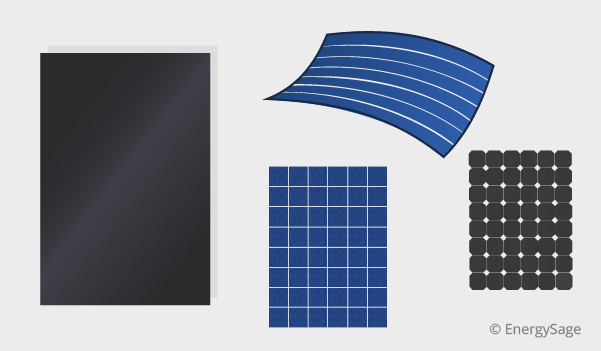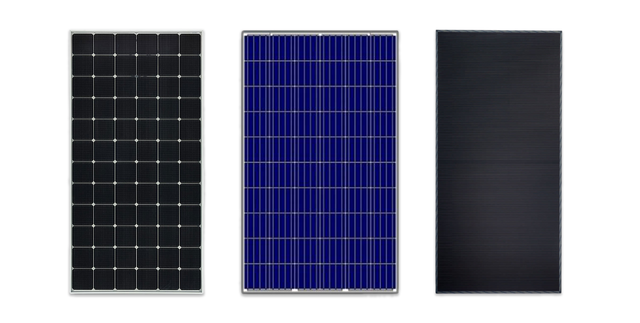The 5-Second Trick For Solar Systems
The 5-Minute Rule for Solar Systems
Table of ContentsNot known Factual Statements About Solar Systems The smart Trick of Solar Systems That Nobody is DiscussingThe Ultimate Guide To Solar SystemsWhat Does Solar Systems Do?
There are three various sorts of photovoltaic panels: monocrystalline, polycrystalline, and also slim film. Monocrystalline photovoltaic panels are extremely effective and have a sleek layout, yet come with a higher cost factor than other photovoltaic panels. Polycrystalline solar panels are cheaper than monocrystalline panels, however, they are much less effective and also aren't as aesthetically pleasing.Nowadays, there are several ranges of monocrystalline solar panels on the market to pick from., are becoming a significantly prominent monocrystalline choice.
Because monocrystalline solar batteries are constructed from a single crystal of silicon, electrons are able to conveniently stream throughout the cell, enhancing overall performance. Not only do monocrystalline panels have the highest possible efficiency rankings, they usually also have the highest possible power capacity ratings. Many monocrystalline panels on the marketplace today will have a power result score of a minimum of 320 watts, however can rise to around 375 watts or higher!.
Due to the fact that polycrystalline cells include numerous silicon cells, the electrons can not move as conveniently and therefore, decrease the effectiveness of the panel. The reduced effectiveness of polycrystalline panels additionally implies they often tend to have a lower power outcome than monocrystalline panels, typically varying between 240 watts as well as 300 watts.
Some Known Questions About Solar Systems.
In order to satisfy your energy needs, you would need to install more thin film panels over a large area to produce the very same quantity of electricity as crystalline silicon solar panels. This is why slim movie solar panels don't truly make sense for domestic setups where area is limited.
The temperature coefficient tells you just how a lot the power outcome will lower by for every 1 * C over 25 * C the panel obtains. The common temperature coefficient for mono and polycrystalline panels typically drops somewhere between -0.
With some thin movie panels, it's tough to even see the individual cells within the panel. They also often tend to have much less circuitry as well as busbars, indicating there's less white area. However, due to the fact that they are so ineffective, you would need to cover your whole roofing system in slim movie panels - which might or may not be your style.

Some producers have functioned around read review this with black packing or forming the cells in different ways, however these aesthetic changes can impact both the price and performance of the panels. On the whole, monocrystalline panels still look smooth, yet they're a little bit more noticable than slim movie panels. solar systems. The process in which polycrystalline solar cells are made triggers the cells to have a blue, marbled look.
The Greatest Guide To Solar Systems
If you get on a limited budget, polycrystalline panels may make even more feeling for you. We do not advise thin film photovoltaic panels for residential setups - their efficiency and also toughness do not make the inexpensive worth it, and also it's not likely you'll have nearly sufficient area to install the variety of slim movie panels you would require to cover your household electrical energy usage.
Considering that they are made from pure silicon, they can be conveniently identified by their dark black color. Using pure silicon also makes monocrystalline panels the most space-efficient and also longest-lasting amongst all three solar panel kinds. This comes at a cost a lot of silicon is squandered to create one monocrystalline cell, often getting to over 50%. solar systems.

Amorphous silicon panels (A-Si) obtain their name from their shapeless nature. Unlike mono-and polycrystalline solar cells, the silicon is not structured on the molecular level.
Solar Systems for Beginners
$0. 32-$0. 65 $1 $1. 50 $0. 70 $1 $0. 60 $0. 70 $0. 50 $0. 60 $0. 43 $0. 50 Note that these numbers don't include the price of setup and labor. With labor and also other Recommended Reading overhanging variables, the overall can rise to $2. 50 to $3. 50 per watt.

This indicates that thin-film panels can be a good alternative for hotter settings or places that experience more sunlight throughout the year. The upgraded International Building regulations of 2012 calls for photovoltaic panels to match the fire rating of the roofing system where they are set up. This is to make certain that the components do not increase the spread of fires in the event of a fire.